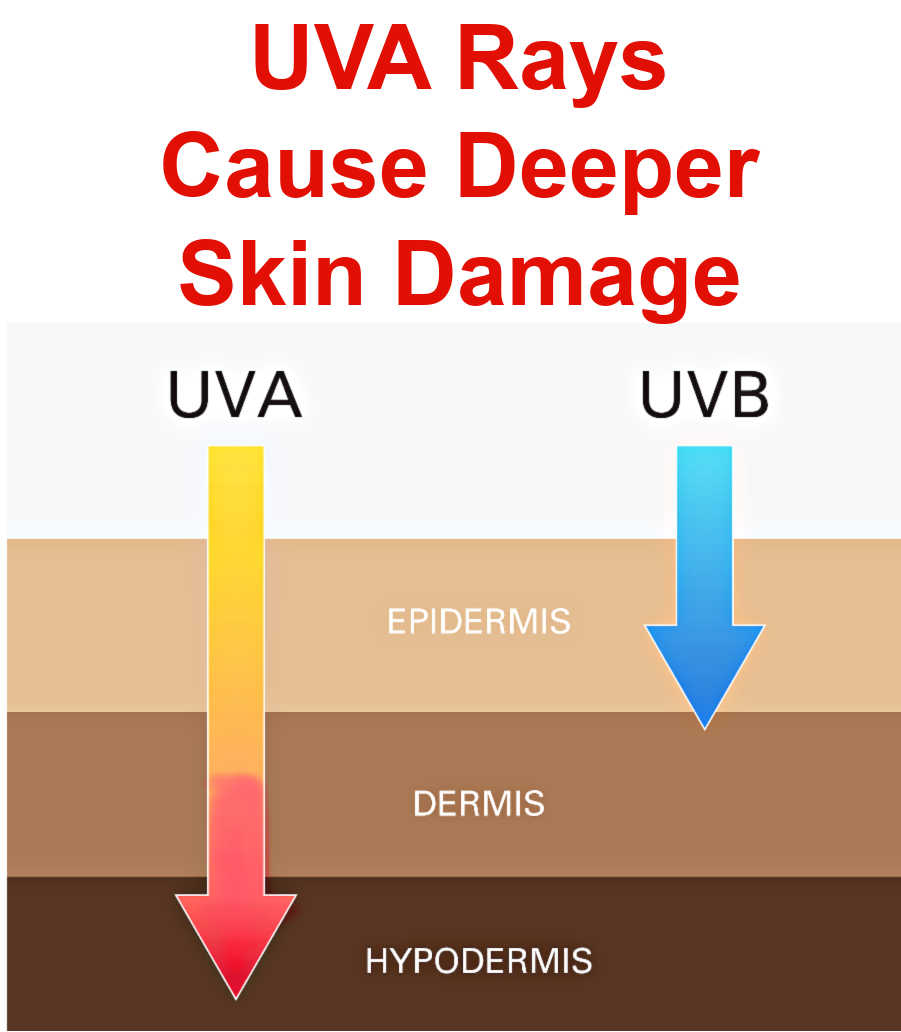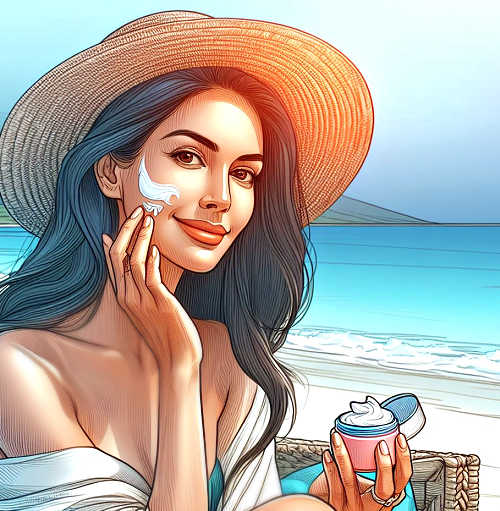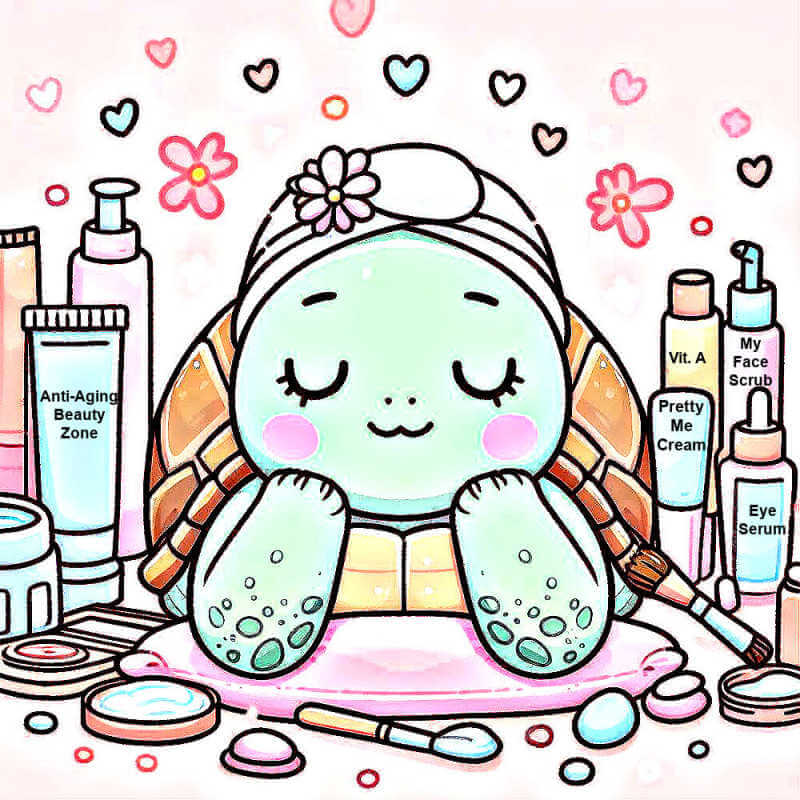- Home
- Sunscreen & Protection
- What Is Pa in Sunscreen
I may earn from qualified Amazon & Affiliate purchases at no cost to you.
What is PA in Sunscreen?
Learn what a PA rating on your sunscreen means and how it may offer more protection against skin aging.
by: Linda Robison / Facial Fitness Specialist @ ABZ
What is a PA rating in sunscreen and how can it help protect your skin from wrinkles, sagging and general skin aging.
Navigating the world of skincare and sun protection can be confusing, with terms like SPF and PA tossed around.
While most of us are familiar with SPF (Sun Protection Factor), understanding the concept of PA is also important for effective sun protection and especially for maintaining youthful, healthy skin.

UVA rays are a type of ultraviolet radiation that can penetrate deep into the skin, reaching the hypodermis, which is the deepest layer of the skin.
Long term damage at this level can cause wrinkles, sagging, and increases the risk of skin cancer.
That's why It's important to shield the hypodermis from UVA rays with broad-spectrum sunscreen or one with a high PA rating.
Why PA rating is as important as SPF
Think of SPF and PA as a dynamic duo on sunscreen labels, each with their unique superhero abilities.
SPF, the more familiar of the two, shields your skin from UVB rays, the ones responsible for sunburn.
But SPF has a weak spot - it completely overlooks UVA rays.
Why is this is a big deal
Because prolonged exposure to UVA rays are responsible for major skin aging and cancer.
According to a study published in the Journal of Investigative Dermatology, UVA exposure can affect the skin's underlying structures including collagen and elastin, which provide support to the skin and fat tissue.
Changes in the skin's structure and composition can potentially impact facial fat distribution.
Why is this important?
Because facial fat pads play an important role in keeping our faces looking plump, firm, and maintain their youthful contours.
While it's natural for facial fat pads to slowly decrease in volume as we age, we certainly don't want to accelerate this process, do we?😲
Note: That's why I also engage in facial exercises. Studies suggest that certain exercises can help maintain a healthy underlying facial structure and slow facial aging.
What does PA rating mean
PA = Protection Grade of UVA
Just like SPF, PA is a rating found on some sunscreen bottles, but it serves a different purpose. SPF measures the sunscreen's capability to block UVB rays, the primary cause of sunburn.
However, SPF doesn't account for UVA rays — a big oversight.
Especially considering that UVA rays contribute to skin aging and could potentially lead to skin cancer such as melanoma.
That's where Protection Grade of UVA steps in.
This rating gauges a product's effectiveness in fending off damaging UVA rays.
Because not all sunscreens are created equal, understanding and paying attention to these ratings could mean the difference between beautifully preserved skin and premature aging.
PA rating in the United States
Unfortunately, not all countries utilize the PA rating system, although it's common in Asian countries such as Japan.
In the United States, many companies just label their products as "broad spectrum,"which means they offer protection against both UVA and UVB rays.
While the term "broad spectrum" is reassuring because it indicates protection against both UVA and UVB rays, it doesn't provide a clear indication of the extent of protection against UVA rays.
This lack of specificity can be a concern because UVA rays contribute to skin aging and can also cause skin cancer.
No rating on your favorite sunscreen: What can you do?
If your favorite sunscreen does not offer a PA rating, or you can't find one that does, here are a few things you can do to ensure adequate protection.
Look for Specific Ingredients:
Certain ingredients offer better protection against UVA rays. Look for sunscreens containing:
- Zinc oxide
- Titanium dioxide
- Avobenzone
- Mexoryl SX
Because these are effective in blocking UVA rays.
Choose a Higher SPF:
While SPF mostly measures protection against UVB rays, higher SPF sunscreens often provide better overall protection, including against UVA rays. Opt for a sunscreen with an SPF of 30 or higher.
Read Reviews and Expert Recommendations:
Look for recommendations from dermatologists or skincare experts, who can advise on sunscreens known for their superior UVA protection.
Consider Water Resistance:
If you'll be sweating or swimming, choose a water-resistant sunscreen to ensure it stays effective against both UVA and UVB rays during outdoor activities.
How to deciper ratings
How can you decipher the PA rating?
It's not as hard as it seems.
The more "+" symbols following the PA on the product label, the stronger the protection against UVA rays.
For instance, PA++++ represents the maximum scale of UVA defense.
When you're on the hunt for an effective sunscreen, pay attention to both SPF and PA.
Experts recommend an SPF of 30 or higher for UVB protection, and a rating of PA+++ or PA++++ for optimum UVA safeguarding.
For a more natural, chemical-free approach to sun protection, consider mineral sunscreens composed of ingredients like titanium dioxide and zinc oxide.
These substances offer solid protection sans the potential toxic effects of certain synthetic compounds.
I use Colorscience. It's a little pricey compared to drugstore brands, but it protects well, feels good on my skin and wears beautifully.
Tips for best protection

I know we all know this, but how many of us remember to reapply our sunscreen after a few hours? 😒
For the best protection, reapplication is key — especially if you're splashing around in the pool or working up a sweat.
Easy to Reapply
I prefer mineral-based sunscreens over chemical ones because they're easier to reapply. Chemical sunscreens can be tricky to blend in seamlessly if you're already wearing makeup.
Also, chemical sunscreens are designed to be absorbed into the skin to effectively filter and absorb UV rays.
So when they're reapplied over makeup, they may not adhere well to the skin's surface and could instead mix with or dissolve existing makeup.
Note: Get this guide on Mineral vs. Chemical Sunscreens and why some not only protect against aging, but can reverse it too.
Final takeaway: What is PA in sunscreen
Skincare professionals now stress the importance of sunscreen more than ever.
Research shows that using a daily facial sunscreen that protects against a broad range of UV rays can help undo existing sun damage and stop more damage from happening.
Do you know what this means? You get a second chance to improve your skin's health and youthful appearance! 😲
This excites me because I'm guilty of not wearing sunscreen often enough. In fact, I always Hated sunscreen! Until I found one that I like and is easy to use.
For the best results, make sure you choose a sunscreen that:
- you find easy to use
- suits your skin type
- feels comfortable when applied
- works with your skincare routine (whether you wear a lot of makeup or none at all)
- and contains enough protection for your active lifestyle
And try to look for ones that list the PA rating to protect against those nasty UVA rays.
About the Author:
Linda Robison is a Facial Fitness Specialist and the founder of Anti-Aging Beauty Zone. She shares expert insights on skincare, facial rejuvenation, and beauty treatments—blending traditional wisdom, personal experience, and science-backed research for both at-home and in-office solutions.
Before you go ....
Please tap on the💙in the bottom right corner if you found this page helpful. Also, Let’s CONNECT! Click the buttons below to follow me on social media.
Thanks so much!


